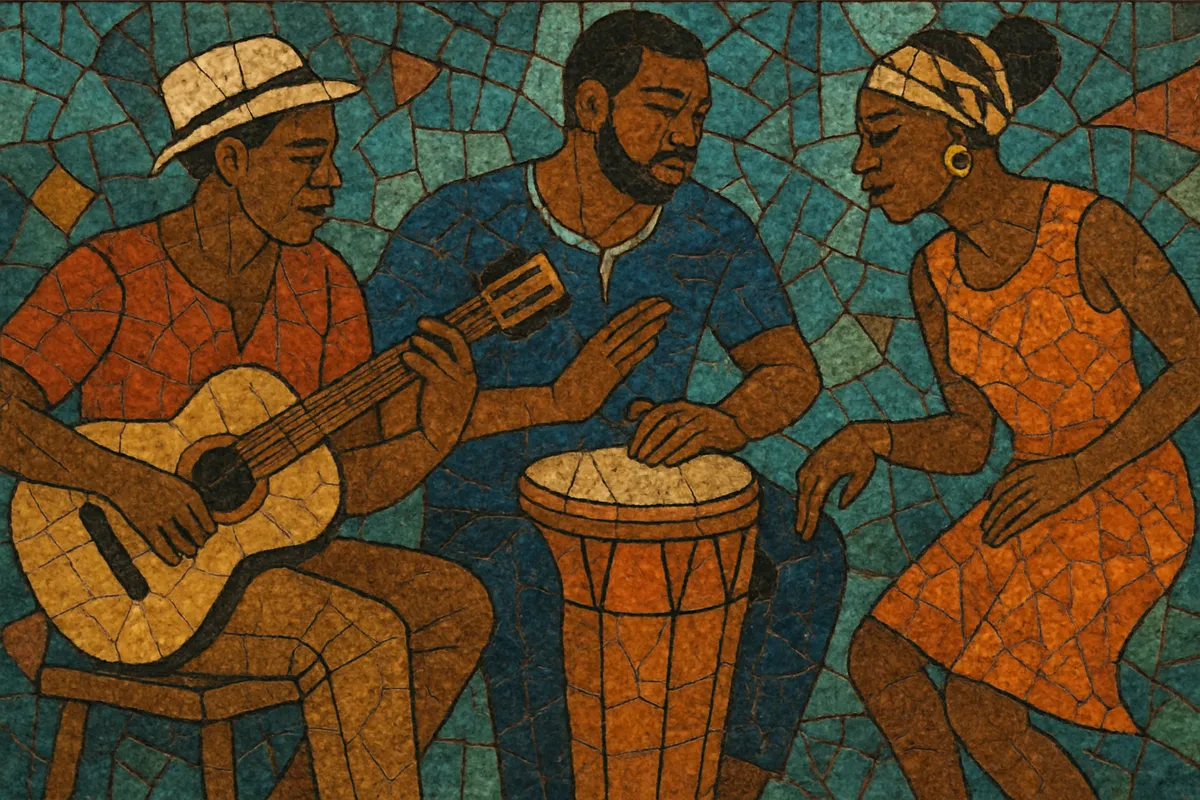Bend-skin (also spelled benskin) is a Cameroonian urban dance-music rooted in Bamileke community rhythms from the country’s West Region. The name is popularly associated with the moto‑taxi culture (“benskin”) of cities like Douala and Yaoundé, and the music’s brisk, bouncy pulse mirrors the jolting, zig‑zag movement of those rides.
Musically, bend-skin blends traditional Bamileke percussion and call‑and‑response singing with modern studio instrumentation such as electric bass, keyboards, and drum machines. It typically uses a lilting 6/8 or 12/8 feel, interlocking hand percussion (shakers, claps, small drums), bright balafon or marimba‑like timbres, and cyclical guitar or keyboard riffs. Lyrics are commonly in Bamileke languages (such as Ghomala’, Medumba, or Fe’fe’), alongside Cameroonian French and Camfranglais, addressing everyday life, humor, social advice, pride, and dance.
Bend-skin grew from Bamileke festive and ceremonial rhythms that emphasize polyrhythmic percussion, call‑and‑response, and communal dance. As Bamileke communities migrated or commuted into major cities, musicians and producers adapted these rhythms for nightlife and cassette culture, tightening the grooves and adding bass guitar, keyboards, and programmed drums. The urban slang term “benskin” (for moto‑taxis) became attached to the dance and then to the music itself, capturing a sense of speed, agility, and everyday street life.
In the 1990s, affordable studios and the cassette market helped bend-skin spread beyond local parties into regional radio and markets. Producers fused Bamileke percussion cycles with tidy, repeating bass ostinatos and bright, bell‑like mallet lines, creating a distinctive shuffle in 6/8 or 12/8. Dance troupes, local ensembles, and studio bands popularized the style at weddings, festivals, and neighborhood clubs, especially among youth in Douala and Yaoundé.
Bend-skin has remained a recognizable Cameroonian groove while absorbing elements from makossa, bikutsi, soukous, and mainstream dance-pop. Contemporary tracks often retain the characteristic rolling ternary feel and choral refrains but may use punchier electronic kicks, side‑chained bass, and slicker arrangements. The style continues to function as a cultural marker for Bamileke identity in cosmopolitan settings, as well as an energetic party format embraced across Cameroon.


